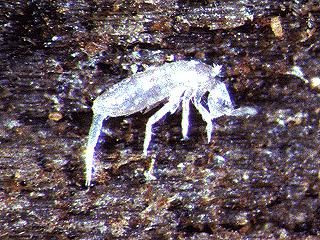Booklice
(Figure 1). These are small, pale-brown to white insects shorter than 6 mm. Wings may be present or absent, and they have a large swollen area above the mandibles (clypeus). Often they are found in books, on floor molding and in closets. They do not suck blood, but feed on molds and mildews.
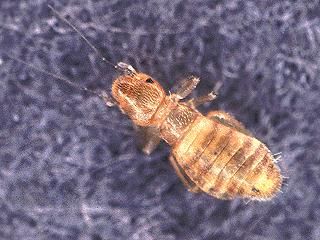
Plaster Beetles
(Figure 2). These beetles are in the family Lathridiidae and are 1- to 3-mm long. They get their name from infesting newly plastered walls. They feed on molds growing on walls or in wet stored grain. They are elongate and are reddish-brown. The wings have six to eight rows of punctures.
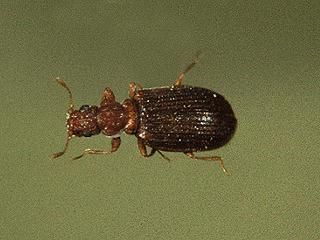
Centipedes
(Figure 3). They are often called "hundred-leggers" and have one pair of legs per segment. They are long (up to 6", or 15 cm) and wormlike. The 40 to 50 body segments are flattened, and the head has one pair of antennae. Some species can bite and penetrate the skin with their mandibles. Centipedes are beneficial outdoors, feeding on insects and other arthropods.
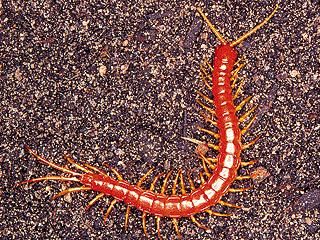
Amphipods
(Figure 4). These are crustacea with a shrimp-like appearance. Amphipods live on the surface (top 1/2" or 1.3 cm) of mulch and moist ground. They are usually pale-brown when alive. After rains, large numbers of amphipods can migrate into garages or under the doors of houses. They die quickly in the drier environment and turn a reddish color. They are often called "lawn shrimp."

Earwigs
(Figure 5). They have forcepslike cerci that can be used to capture prey or to defend themselves against predators. Earwig adults are 1/4" to 1" (6 to 25 mm) long. Their bodies are flattened and are pale- to dark-brown. The antennae are threadlike and about half the length of the body. They are active at night and often crawl into homes under doorsills. They are attracted to light and are beneficial, eating insects and other pests.
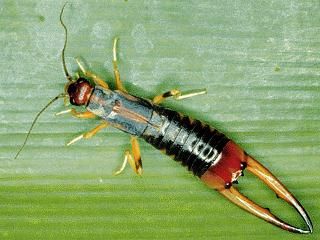
Millipedes
They are often called "thousand-leggers" because they have many legs (two pairs per body segment). They have many cylindrical body segments and one pair of short antennae with seven segments. Millipedes feed on decaying organic matter and are found in decaying vegetation and mulched areas. They are nocturnal and are known to have mass migrations from swampy areas of Florida.
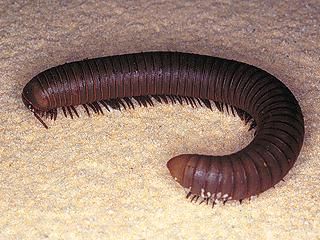
Pillbugs
They are often called "roly-polies" because they roll into a tight ball when disturbed. They are Crustacea in the order Isopoda and are about 5/8" (1.6 cm) long . Pillbugs have seven pairs of legs and two pairs of antennae, one of which is very tiny. They live in wet areas under logs, flower pots or mulch. They feed on decaying organic matter.
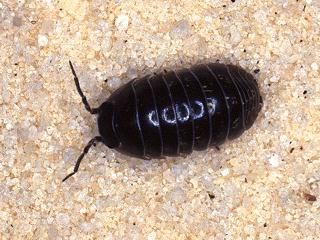
Sowbugs
These are similar in appearance to pillbugs but cannot roll into a tight ball. They also have seven pairs of legs and two pairs of antennae. Sowbugs have prominent taillike appendages (uropoda) that project from the rear end of the body. They are active at night and often are found under debris, in mulch and under flower pots. They often enter homes by crawling under doors.

Fungus Gnats
These small flies breed in damp soil or decaying vegetable matter. Often they are brought into houses in potted plants or are found in commercial buildings in planted areas. Fungus gnat adults are attracted to light and often are found around windows.
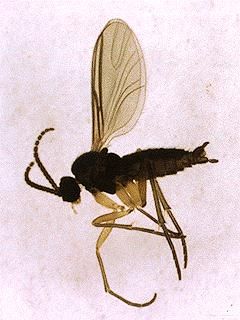
Springtails
They are tiny insects about 1-mm to 2-mm long. They are in the order Collembola and are white to grayish, with no wings. They have a forked structure (furcula) on the rear of the body that enables jumping. Springtails live in mulch and wet soil, but can migrate into homes and swimming pools in large numbers. They feed on molds and decaying vegetation.
